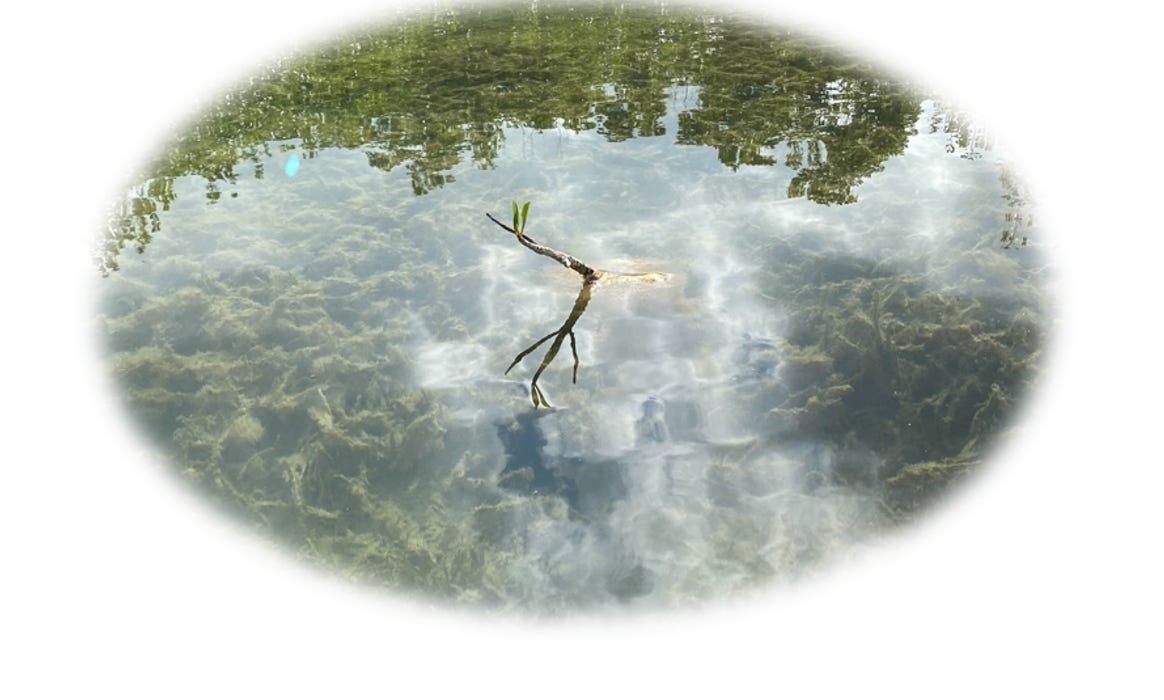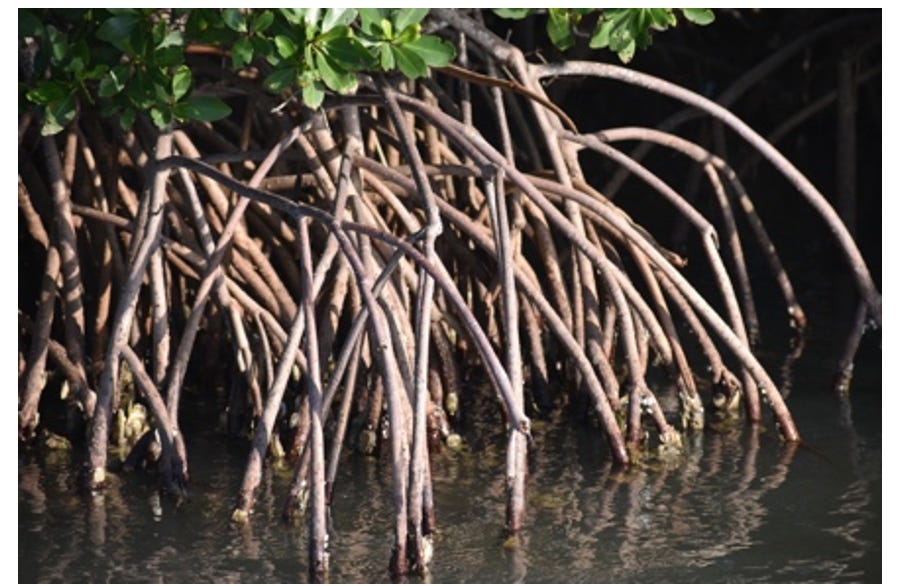All of the Florida Keys are ringed by mangroves, and most of them are mangroves through and through. They have no people, good for them, and I think that they have lessons to teach.
Red mangroves don’t just let their seeds go to take their chances like a maple or a milkweed. A mangrove tree gives each seed a head start in life while it’s still attached. After growing for a while, the little plant floats away. By then, it’s smart enough to recognize a promising spot to root. If the spot doesn’t work out, the baby mangrove floats on. It has everything it needs for a year of life in search. So, no hurry.
Some of these new mangroves make bold choices that none of their kind had thought of. You’ll often see a solo stem far from its fellows staking its claim to a new piece of shallow bottom. There is courage in this. Others may come along and colonize the same area or – by chance or choice – float on in search of better ground.
I like to imagine that the mangroves operate by consensus. When enough of them agree on a new location, the trees grow more densely and begin to grow together. The arched prop roots that anchor the trees to the bottom intertwine ever more thickly and catch sand. In time, the trees create their own island.
Of the 1,700 islands in the Keys, only about 800 have any real land to them, land that rises up out of the water. The rest are mangrove islands. They exist exactly at sea level, awash all the time; and they change their shape as satellite plants get their start and the main body grows out to them. Red mangroves are called "walking trees" because the prop roots seem like legs, and they step the tree outward. Each tree intertwines with its neighbors, which makes all of the trees on the island more secure. Every tree and every island become all that they can be and they harbor a world of species that come to them across the water with no papers. This is not an idea of community that the Governor of Florida or his party share.
When we began coming to the Keys on an experimental basis, my dream was to explore the islands that I'd seen from the air and on my charts. But there is no walking around on a mangrove island as there is on Naushon, Nashawena, Pasque or Penikese on the edge of Vineyard Sound, or the Isles of Shoals off New Hampshire, or the granite islands of Casco and Penobscot bays in Maine. Rocky or sandy, they admit a person on foot. A mangrove island is a fortress of roots. You can stand next to it, the water lapping at your knees, but you can't go ashore. There is no shore and no entry. The prop roots are as tough as iron and more resilient. Storms can't dislodge them.
A few mangrove islands grant passage by water. There are sometimes channels where the roots have made a way. The water is deep here, and the mangrove branches intertwine overhead. It's like paddling through a cathedral that has no straight lines.
Mangroves need fresh water to live but live all their days in salt. The roots have learned how to filter out most of the salt, but more comes up than is healthy for the tree. Their fix for this makes a good story. If you sign up for an eco-tour anywhere in the Keys, your guide will probably point out the yellow leaves on the mangroves. There aren't many, one on every branch, more or less. This is a leaf whose lot in life is to take up salt so its fellows have the fresh water . Then it turns yellow and drops off into the sea. It is the sacrificial leaf, the guides tell you. It's not clear how this dismal job is assigned, or if the leaf volunteers in some way. Like Jesus. (No kidding. Google sacrificial leaf + jesus and see what you get.) When I see a yellow mangrove leaf on the water, I think about it every time.
Even though the science is sketchy, I believe in the sacrificial leaf. Its existence fits my idea of the mangroves and what I want them to represent, an island in the sea that is organized for the greater good, that protects and nourishes all its own, and all who come to inhabit its branches and roots, and is proof against any storm.



